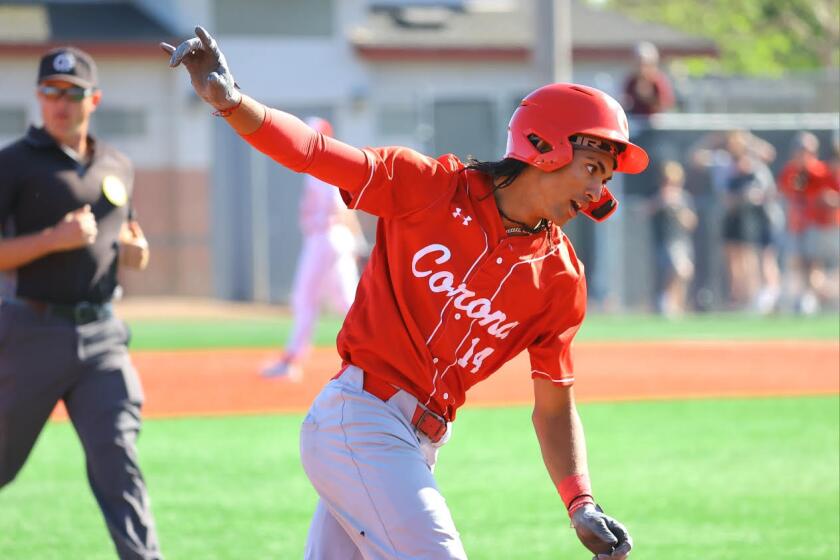Prep Voices : Boosters or Coaches, Who’s in Control?
- Share via
Booster clubs long have offered monetary and spiritual support for high school athletic programs, but lately, some grumbling has been heard about these same groups wielding excessive control in determining the direction of the teams.
Coaches and athletic directors complain of the abuse of power by some booster club members who believe, because of the support provided, they should have a say in everything from who gets playing time to who coaches the team.
On the other hand, parents say they merely want accountability on behalf of the school’s athletic program and its coaches. They’re looking for a way to address concerns without fear of retribution, and for fair and equal treatment of their children.
In these financially difficult times, high school athletics have become increasingly reliant on the support of booster clubs to help make ends meet. And despite some coaches’ feelings that they can’t live with them, they certainly can’t live without them.
Perhaps by more clearly defining their roles and responsibilities, athletic departments and booster clubs could learn to peaceably coexist, working together to provide a positive and productive experience for the athletes. Isn’t that what it’s all about anyway?
“To have a no-frills program, you must prioritize your needs and exclude the luxuries.”
Q: Can a high school sports program survive without the support of a booster club?
PRO
BOB ZAMORA, Baseball Coach, Capistrano Valley High School
His Program Thrives With No Frills
Three Southern Section championships; six South Coast League championships; two major league players (Eric Fox with Oakland and Don August with Milwaukee); six minor league players; 21 Division I college scholarships. Capistrano Valley is proud of its accomplishments in baseball. All this without the aid of a booster club.
The school district supplied the necessary items: brick dust, fencing, uniforms, balls, protective gear, coaching stipends, scoreboard, transportation, field maintenance, batting machines and cages. The student body paid for umpires and tournament fees. The parents supplied the individual’s equipment. All this coupled with outstanding players proved a winning combination.
However, the passage of Proposition 13 hampered the school district’s ability to fund athletics. I thought of forming a booster club. But I had another idea that would help us out financially and give the same booster club-weary parents more time to spend with their children.
What I did had not been done previously because of an archaic education code. With the help of some administrators who looked the other way, I sold 4-foot by 8-foot advertisements on the outfield fence. No one complained, so many of my coaching colleagues also began selling signs. Today, it is rare to go to a high school diamond in Orange County and not see advertisements on the fences. These signs generate about $2,000 per year, just enough to keep our no-frills program in the black.
To have a no-frills program, you must prioritize your needs and exclude the luxuries: expensive jackets, pregame jerseys, new balls for infield and bullpens, dugouts--all require money.
At Capistrano Valley our No. 1 priority is the playing surface. The word “our” refers to the players. They spend time and effort maintaining the fields daily. The pride and confidence they have in their field is reflected in their play. Our field surface is rated as one of the finest in the county.
Our baseball parents have done a lot for their sons. The moral support being paramount. I want to thank them for their support by telling them to sit back, relax and enjoy their sons having fun.
More to Read
Get our high school sports newsletter
Prep Rally is devoted to the SoCal high school sports experience, bringing you scores, stories and a behind-the-scenes look at what makes prep sports so popular.
You may occasionally receive promotional content from the Los Angeles Times.






